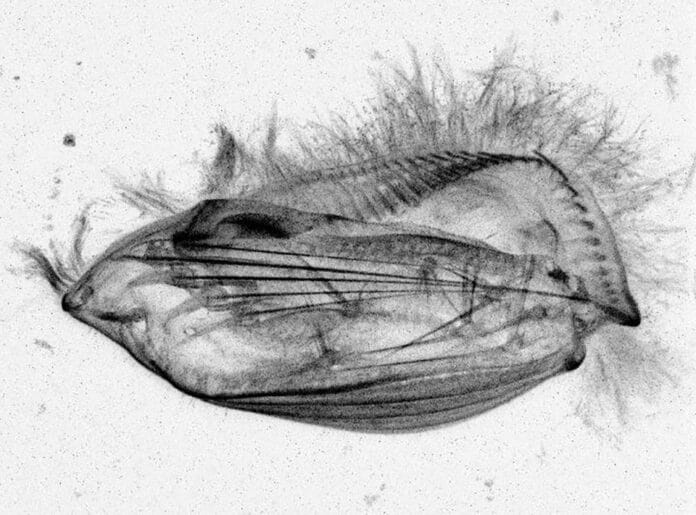In general, aquatic single-celled organisms don’t have legs and don’t walk – they roll, swim or slither. But, a single-celled protozoan, Euplotes eurystomus, was found to walk using a simple, mechanical computer to coordinate its microscopic legs.
Euplotes possess 14 appendages that resemble legs, and each one is made up of clusters of ciliated hairs. For the first time, the scientists demonstrated how intracellular connections between these cilia regulate their motions, allowing the legs to move only in specific patterns and successions. The aquatic organisms’ movements become less efficient when these internal connections are broken, frequently causing the cells to turn in circles rather than walk in a straight line.
Wallace Marshall, Ph.D., lead study author, and professor of biochemistry and biophysics at UCSF, said, “Euplotes use these connections to facilitate an elaborate walking motion, but my suspicion is when we delve into this more, we’ll find that other cells use similar forms of computation to control more subtle processes.”
When UCSF postdoctoral research fellow Ben Larson, Ph.D., spotted Euplotes scurrying around under his microscope, he initially thought he was watching insect-like animals. When he realized the organisms were single-celled, he became intrigued by how they coordinated their 14 appendages without a brain or nervous system.
Scientists observed Euplotes cells in further depth to comprehend this uncommon ability. They slowed down films of the walking cells, captured 33 frames per second, and labeled each leg to examine the organisms’ gait.
The cells neither had a cadence like a galloping horse nor did they walk with legs visibly alternated like individuals. However, scientists discovered that the appendages did exhibit some regularity. Following the description of 32 distinct “gait states,” or combinations of leg movements, the scientists demonstrated which gait states were more likely to follow.
Larson said, “There seemed to be this sequential logic happening with the movements. They weren’t random, and we began to suspect some information processing was happening.”
Since the 1920s, scientists have known that Euplotes’ appendages project lengthy protein filaments into the organism. Microtubules, the primary building block of a cell’s cytoskeleton, make up these filaments, which have long been thought to have a structural function in Euplotes. However, when scientists used medication or a needle to damage the microtubules, Euplotes no longer moved in the same manner; instead, their gait became random and haphazard.
Scientists collaborated with computer scientists to model how the filaments could control the walking motion. They concluded that tension and strain on the filaments could dictate which gait states were possible at any given moment. The machinery, they said, resembles a Strandbeest – a moving, kinetic sculpture designed by a Dutch artist to walk and react to its environment.
Marshall said, “Although this internal machinery doesn’t resemble today’s digital devices, it does follow principles used by early mechanical computers.”
“The fact that Euplotes’ appendages are moving from one state to another in a non-random way means this system is like a rudimentary computer.”
Scientists noted, “More work is needed to understand exactly how the microtubule filaments control Euplotes walk. But their computational modeling and experiments suggest a completely new, mechanical method for a cell to control its internal state.”
Larson said, “This is a fascinating biological phenomenon, but it could also highlight more general computational processes in other types of cells.”
Journal Reference:
- Ben Larson et al. A unicellular walker controlled by a microtubule-based finite-state machine. Current Biology. DOI: 10.1016/j.cub.2022.07.034
